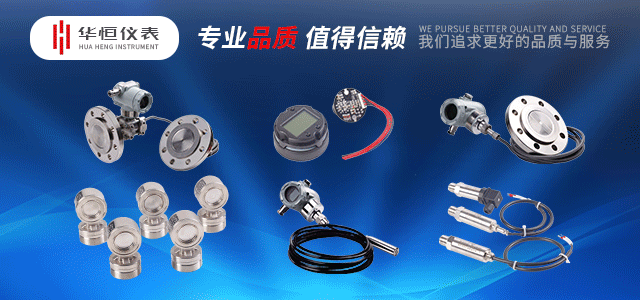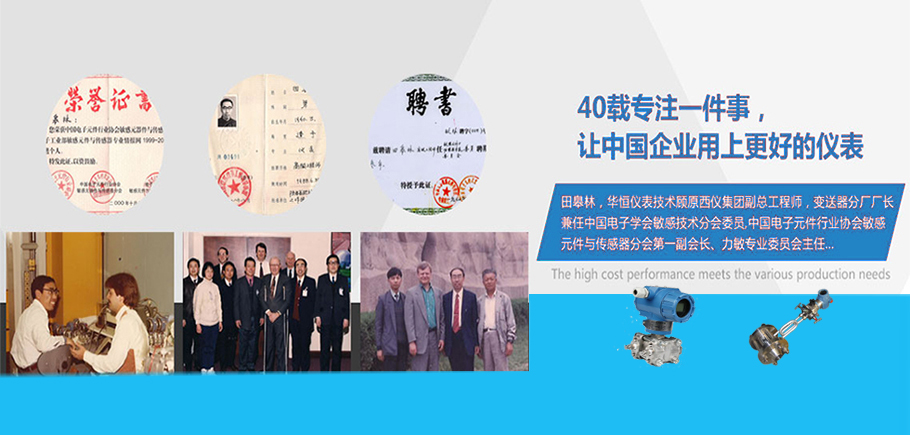| 【数显温度变送器】0.25级精度和0.45级精度区别 |
| 信息来源: 变送器厂家 | 2020-07-20 点击量: 12285 |

【数显温度变送器】0.25级精度和0.45级精度区别/温度变送器工作原理:一体化温度变送器一般由测温探头(热电偶或热电阻传感器)和两线制固体电子单元组成。采用固体模块形式将测温探头直接安装在接线盒内,从而形成一体化的变送器。一体化温度变送器一般分为热电阻和热电偶型两种类型。
在温度变送器使用的过程中,不可避免的存在精度的困扰,华恒液位变送器厂家在处理众多厂商在处理高温或低温介质时候,不可避免的需要面对处理液位自动化控制的同时处理温度带来的困扰,
在设计液位类仪表使用时,温度作为至关重要的一个参数,很多情况下影响到介质测量,在工业使用仪表的过程中都会存在一个误差,根据而仪表准确度就是说bai明仪表指示值与被测量实际值之间的近似程度。
我国工业仪表等级分为0.1,0.2,0.5,1.0,1.5,2.5,5.0七个等级,并标志在仪表刻度标尺或铭牌上,数字越小,说明精度等级越高,与实际值的偏差越小。作为工业级仪表应用,常规使用的1.0级使用比较多,作为液位测量和温度检测类仪表常用的精度为0.1;0.25;0.45,时常有很多水处理的厂商,会提到0.2级和0.5级时,很多科研机构,又提出0.25级和0.45级,这0.25和0.2级究竟有没有去区别呢?
【数显温度变送器】0.25级精度和0.45级精度区别/ 在国内早期的关于仪表精度标识中,使用的0.1级,0.25级,0.45级,后来随着对精度要求提高,逐渐演化为,0.075级,0.1级,0.2级,0.5级,精度等级是以它的允许误差占表盘刻度值的百分数来划分的,其精度等级数越大允许误差占表盘刻度极限值越大。量程越大,同样精度等级的,它测得数值的绝对值允许误差越大。
热电阻温度变送器是由基准单元、R/V转换单元、线性电路、反接保护、限流保护、V/I转换单元等组成。测温热电阻信号转换放大后,再由线性电路对温度与电阻的非线性关系进行补偿,经V/I转换电路后输出一个与被测温度成线性关系的4~20mA的恒流信号。
在正常的使用条件下,bai仪表测量结果的准确du程度叫仪表的准确度。zhi引用误差越小,仪表dao的准确度越高,而引用误差与仪表的量程范围有关,所以在使用同一准确度的仪表时,往往采取压缩量程范围,以减小测量误差。
Working principle of temperature transmitter: The integrated temperature transmitter generally consists of a temperature probe (thermocouple or thermal resistance sensor) and a two-wire solid electronic unit. The temperature measuring probe is directly installed in the junction box in the form of a solid module to form an integrated transmitter. Integrated temperature transmitters are generally divided into two types: thermal resistance and thermocouple.
In the process of using temperature transmitters, it is inevitable that there are problems with accuracy. Huaheng liquid level transmitter manufacturers inevitably need to face the automatic control of liquid level when dealing with many manufacturers dealing with high temperature or low temperature media. At the same time deal with the trouble caused by temperature,
When designing the use of liquid level meters, temperature is a crucial parameter, which affects the medium measurement in many cases. There will be an error in the process of industrial use of the meter. According to the accuracy of the meter, the indicator value of the meter The degree of similarity with the actual value being measured.
Our country’s industrial instrument grades are divided into seven grades: 0.1, 0.2, 0.5, 1.0, 1.5, 2.5, 5.0, and are marked on the meter scale or nameplate. The smaller the number, the higher the accuracy grade and the smaller the deviation from the actual value. . As an industrial-grade instrument application, the conventionally used 1.0 level is more commonly used. As a liquid level measurement and temperature detection instrument, the commonly used accuracy is 0.1; 0.25; 0.45. There are often many water treatment manufacturers, and they will mention the 0.2 and 0.5 levels. At that time, many scientific research institutions also proposed 0.25 and 0.45. Is there any difference between 0.25 and 0.2?
In the early domestic identification of instrument accuracy, 0.1, 0.25, and 0.45 were used. Later, with the improvement of accuracy requirements, it gradually evolved to 0.075, 0.1, 0.2, and 0.5. The accuracy level is based on it. The allowable error accounts for the percentage of the dial scale value. The larger the accuracy level, the larger the allowable error accounts for the dial scale limit value. The larger the range, the greater the allowable error of the absolute value of the measured value for the same accuracy level.
Thermal resistance temperature transmitter is composed of reference unit, R/V conversion unit, linear circuit, reverse connection protection, current limiting protection, V/I conversion unit and so on. After the temperature measurement thermal resistance signal is converted and amplified, the linear circuit compensates for the nonlinear relationship between temperature and resistance. After the V/I conversion circuit, a 4-20mA constant current signal with a linear relationship with the measured temperature is output.
Under normal conditions of use, the accuracy of the measurement result of the bai meter is called the accuracy of the meter. The smaller the zhi reference error, the higher the accuracy of the meter dao, and the reference error is related to the range of the meter, so when using the same accuracy meter, the range range is often compressed to reduce the measurement error.
华恒变送器厂家研发出传感器和智能电路板两项核心技术,不仅所有产品的核心部件技术全部掌握,工业自动变送器厂家的精确度也在不断提高,由0.2级提高到0.1级。还可通过对所掌握核心技术进行延伸,变形出测流量、测温度的其他产品。

我们公司目前拥有三大技术实力,一是全隔离的智能电路处理单元技术,二是金属电容传感器的制造技术,三是全系列节流装置的多参量技术。
华恒变送器厂家凭借自身拥有的传感器和智能电路板核心技术,可以根据客户要求,低成本对核心技术进行延伸变形,实现个性化产品定制。主要产品有SMART(斯玛特)系列压力变送器、多参数变送器、流量器、温度传感器和物位(液位变送器厂家,为我国电力、石油、化工、冶金、水泥、矿业等行业提供了高性能价格比的工业自动变送器厂家产品.






